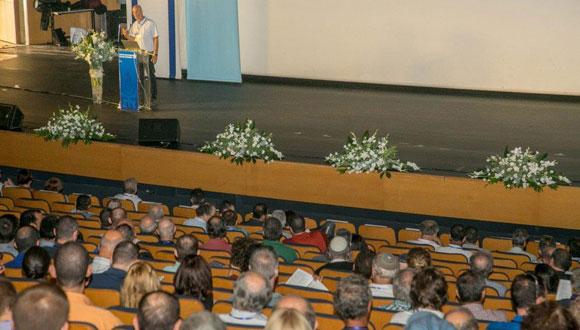קולוקוויום בפיזיקה: Hydra Morphogenesis – where Biology meets Physics
Prof. Oded Agam, HUJI
Zoom: https://tau-ac-il.zoom.us/j/86547186243
Abstract:
Animal morphogenesis is a pattern formation process through which an organism undergoes structural changes to develop its mature body form. Hydra, a small freshwater multicellular organism, stands as an exceptionally suited model system for investigating the nature of morphogenesis due to its remarkable regeneration capabilities, simple body structure (essentially a bilayer epithelial tissue with about 105 cells), and robust development under manipulations. A small flat tissue fragment excised from a mature Hydra initially folds into an approximately hollow sphere and eventually regenerates into a fully matured animal within 1-2 days, in a process that essentially does not involve cell division. The Hydra’s primary morphological transition, from the incipient spherical shape to a persistent cylindrical structure, occurs within a few minutes after an extended period, during which there are no significant morphological changes.
In this presentation, I’ll lead you through a set of experiments conducted at Erez Braun's lab (Technion) and the parallel development of a field-theoretic framework that explains the primary morphological transition observed during Hydra regeneration. I will demonstrate that this morphological change can be understood as a first-order-like phase transition characterized by an activation process over a barrier, wherein noise plays an essential role.
I'll start with a brief look back at the history of Hydra regeneration, then move on to Braun's key finding: exposing a Hydra’s tissue to an electric field can halt and even reverse the regeneration processes. Next, I'll discuss experiments where we looked at the calcium ions' activity within the tissue and show that the statistical characteristics of the calcium field can be understood as equilibrium-like fluctuations of a bistable field.
Moving forward, I'll couple the calcium field to the tissue's Gaussian curvature and introduce the morphological potential that dictates the probability density of the tissue's various morphological states. Calculation of this potential yields a tilted double-well potential, where one minimum corresponds to a spherical shape and the other to an elongated tube-like structure. The natural progression of this potential gradually alters its tilt until the second minimum becomes the global one. It implies that the primary morphological transition should be a first-order-like phase transition. I’ll present several experiments that support this prediction.
To further validate this theoretical model, I'll demonstrate that by slowing down the natural evolution of the morphological potential, the system can enter a new phase characterized by stochastic morphological swings (see Figure below). Finally, I'll show that the system's response to a periodic shaking of the morphological potential reflects the characteristics of a stochastic resonance with the implication that noise plays a dominant role in Hydra morphogenesis.
מארגן האירוע: ד"ר יוחאי בר סיני


